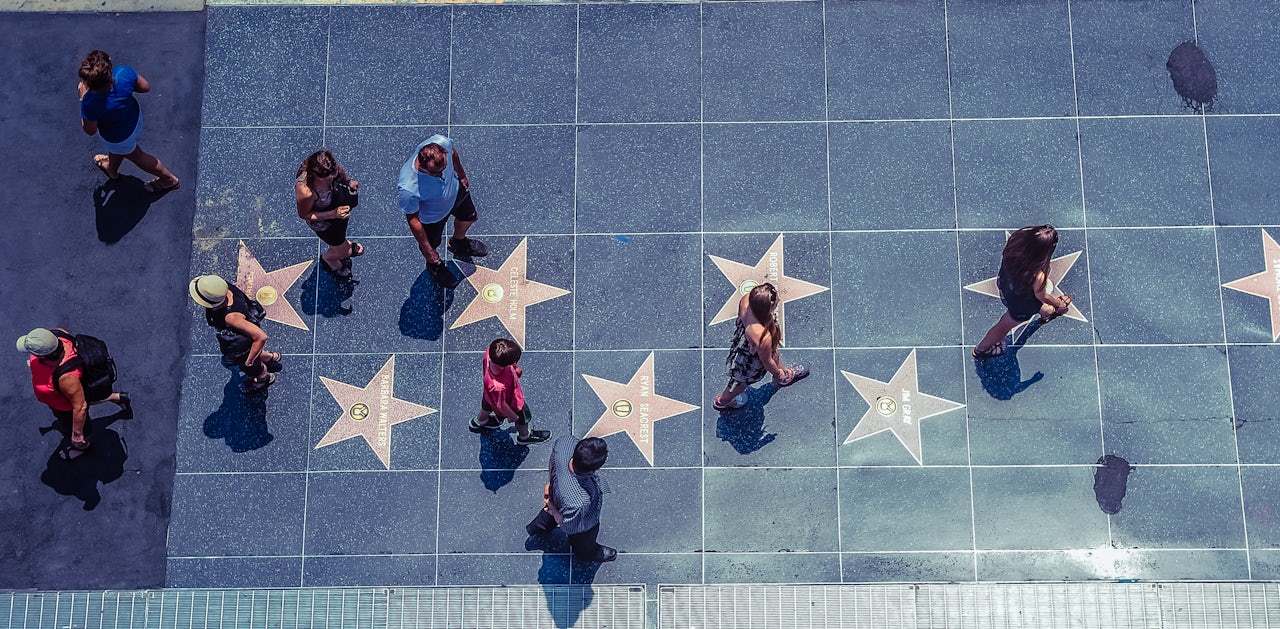In 2016, Otis Elevator heir James Otis walked up to Donald Trump’s Hollywood Walk of Fame star, sledgehammer and pickaxe in hand. “I decided I just sort of had enough about the sexual abuse and the sexual misconduct towards women,” he told CBS News soon after. “And I realized there was many women in my own life who’ve experienced that sort of sexual abuse. So I said I’ve gotta come up and do something.”
That something was smashing the star to pieces, which was the most damage the star had ever seen... until this week, when the star was pulverized by protester Austin Clay yet again. (Amazingly, Clay was bailed out by none other than James Otis.) By now, the Hollywood Chamber of Commerce, which oversees the Walk, is used to fielding requests for comment about the star. In response to The Outline the Chamber sent over a boilerplate statement carrying the weariness of someone who would really prefer to stop talking about this.
“To reiterate: The Hollywood Walk of Fame is an institution celebrating the positive contributions of the inductees,” said Leron Gubler, President/CEO of the Hollywood Chamber of Commerce. “When people are unhappy with one of our honorees, we would hope that they would project their anger in more positive ways than to vandalize a California State landmark. Our democracy is based on respect for the law. People can make a difference by voting and not destroying public property.”
Gubler made that original statement in response to the 2016 incident. The Chamber refused to answer further questions.
Despite its beginnings as a space to honor Hollywood industry and community leaders, the Walk of Fame has a history of being a site of protest and public disavowal. In 1981, animal rights activists demonstrated around Ronald Reagan’s star to encourage him to keep recognizing leopards as an endangered species. In 1988, the Walk was the site of a protest by disability rights activists, as members of the Southern California Chapter of American Disabled for Accessible Public Transit took to the Walk with signs and sledgehammers. In February 1994, Scripps Howard News Service reported that 33-year-old Jose Gomez vandalized Michael Jackson’s star on the Walk in response to child sex abuse allegations against the singer.
Bill Cosby’s star was vandalized at least once in 2014 with the word “rapist” scrawled across it in Sharpie. The following year, there was a new outcry for his and Trump’s stars to be removed. The Hollywood Chamber of Commerce refused. “The Hollywood Walk of Fame is a registered historic landmark. Once a star has been added to the Walk, it is considered a part of the historic fabric of the Hollywood Walk of Fame,” Gubler told The Hollywood Reporter at the time. “Because of this, we have never removed a star from the Walk.” Later that year, activists gathered around Cosby’s star to protest statutes of limitations for sex crimes. His star continues to be a target for vandalization today.
The recent destruction of Trump’s Walk of Fame star, on the walk since 2007, is only the latest in a now years-long, turf war between his supporters and opponents since his presidential campaign began. On one side are those who pointedly clean his star. On the other side, those who use it as target practice for their political rage. Increasingly, the Walk is a site for political protest, just as there is a larger cultural shunning of the markers we use to communicate legitimacy, markers that are supposedly indelible. Elsewhere, the debate over and removals of monuments honoring Confederate soldiers and slave owners have dovetailed with grassroots efforts to put up more monuments to historically significant women, African Americans, and other marginalized people and groups.
Luckily for us, names and statues and geographical markers can be changed as public opinion on what should be preserved continues to evolve. The mountain once known as Mt. McKinley, now officially recognized as Denali, remains physically the same, though its official name has now been changed to honor its original Koyukon Athabascan title. An historic institution like Yale can change the name of a dorm to honor computer pioneer Grace Hopper instead of pro-slavery advocate John Calhoun, because the space the names are assigned to don’t change its physical use and structure.
When it comes to the Hollywood Walk of Fame, however, its named physicality is the extent of its substance. As cultural legacies are being questioned and old markers of legitimacy are constantly undermined, its purpose seems more and more outdated, along with the bureaucracy around it. Anyone with $30,000 can get one, as long as the Hollywood Chamber of Commerce deems you worthy. It showed its stuffy side when, in 2013, it announced Kim Kardashian ineligible for the Walk, along with all other reality stars. Perhaps in the future people will marvel at the importance we placed on a crumbling walkway dedicated to the rich and famous. Hopefully, they’ll make fun of us for it, too.


